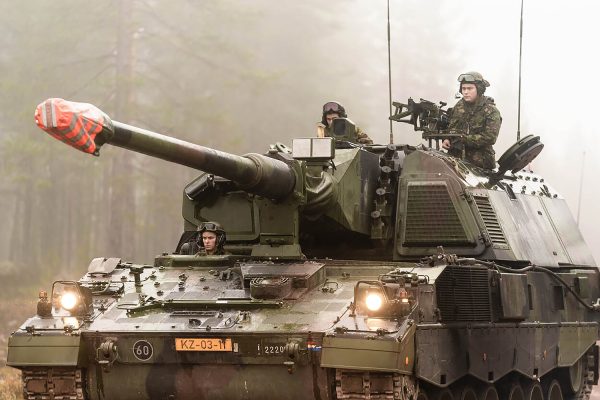
For the first time since the Russian invasion in February, European countries did not pledge additional weapons to Ukraine in July.
The German Kiel Institute, which keeps track of countries’ humanitarian as well as military assistance to Ukraine, reports that the United States is providing €25 billion in weapons, in addition to €20 billion in humanitarian and financial support. European countries, including the UK, are giving less than €10 billion in arms.
Christoph Trebesch, who leads the team in Kiel that compiles the data, calls it “surprisingly little considering what is at stake.” He compares the €10 billion for Ukraine to the €750 billion Europe, excluding the UK, spent to recover from the coronavirus pandemic.
I have a story in the Netherlands’ Wynia’s Week about Europe’s waning support for Ukraine. I’ll translate the highlights.
Zelenskyy wants more
Weapons that were promised earlier in the year have continued arriving in Ukraine, but President Volodymyr Zelenskyy wants more: he has asked for 2,000 armored vehicles, 1,000 heavy howitzers, 500 tanks and 300 rocket launchers.
Only the Americans are able to meet such requests, and even they don’t have 1,000 howitzers tucked away in storage somewhere.
The United States has provided twice as many weapons to Ukraine as Canada, the European Union and the United Kingdom combined, including 7,000 small arms, nearly 2,000 anti-armor systems, some 1,400 portable anti-aircraft Stingers, over 700 kamikaze drones, ninety howitzers and sixteen helicopters.
And that was in May. The Pentagon hasn’t released more recent figures.
Call for more missiles
Former NATO commanders Philip Breedlove and Wesley Clark, seven former American ambassadors and six former assistant and deputy secretaries argue in The Hill that America must do more to help Ukraine win the war. They call for long-range missiles that could reach inside Crimea and Russia’s home territory.
So far NATO allies have been reluctant to provide weapons that could be used to attack Russia itself, fearing Vladimir Putin might retaliate with nuclear weapons.
President Joe Biden stressed in an op-ed in The New York Times that NATO does not seek a war with Russia, nor Putin’s downfall.
He also emphasized that he will not lean on Ukraine to trade territory for peace. Some experts believe Putin might be persuaded to end the war if he can keep Crimea and a slice of Southeastern Ukraine. Others call this appeasement: give Putin a finger and he will take your whole hand.
Ukrainians cross the Dnieper
Ukraine’s priority is recapturing the territory Russia has gained since February. The focus is on the city and region around Kherson, a provincial capital on the mouth of the River Dnieper west of Crimea. Kherson must be retaken to forestall a Russian attack on Odessa, which could cut Ukraine off from the Black Sea.
The next step would be pushing the Russians back into the Donbas, the region they have held since 2014.
For that, Breedlove and Clark argue, the Ukrainians need short- and medium-range artillery and missiles, which Biden has been willing to give.
In June, the United States sent eighteen heavy howitzers and sixteen so-called High Mobility Artillery Rocket Systems to Ukraine, which can be equipped with either six rockets that have a range of about 60 miles each or one missile with a range of 190 miles, which is almost the distance from the Dnieper to the Russian border. The Pentagon says it is only giving the Ukrainians the short-range rockets.
Dutch are running low on supplies
The heaviest weapons provided by European countries are the self-propelled Panzerhaubitze 2000, made in Germany. They have a firing range of about 40 miles. The Germans are gifting ten, the Italians five, the Dutch probably eight. (The government will not confirm the number.)
Ukraine is waiting for an automated German air defense system that uses IRIS-T missiles to shoot down enemy aircraft and missiles. Five Gepard anti-aircraft tanks have arrived so far. Germany has promised to send fifteen. It has refused to share its state-of-the-art Leopard 2 tank.
The Baltic states and Poland have paid the most relative to the size of their economies. Italy is among the least generous nations. The Dutch contribution is average with almost half a billion euros in support, of which €172 million are weapons.
Prime Minister Mark Rutte told reporters when he visited Kiev last month that there’s not a lot more his country can do: “We’ll have gone through our own supplies at some point.”
